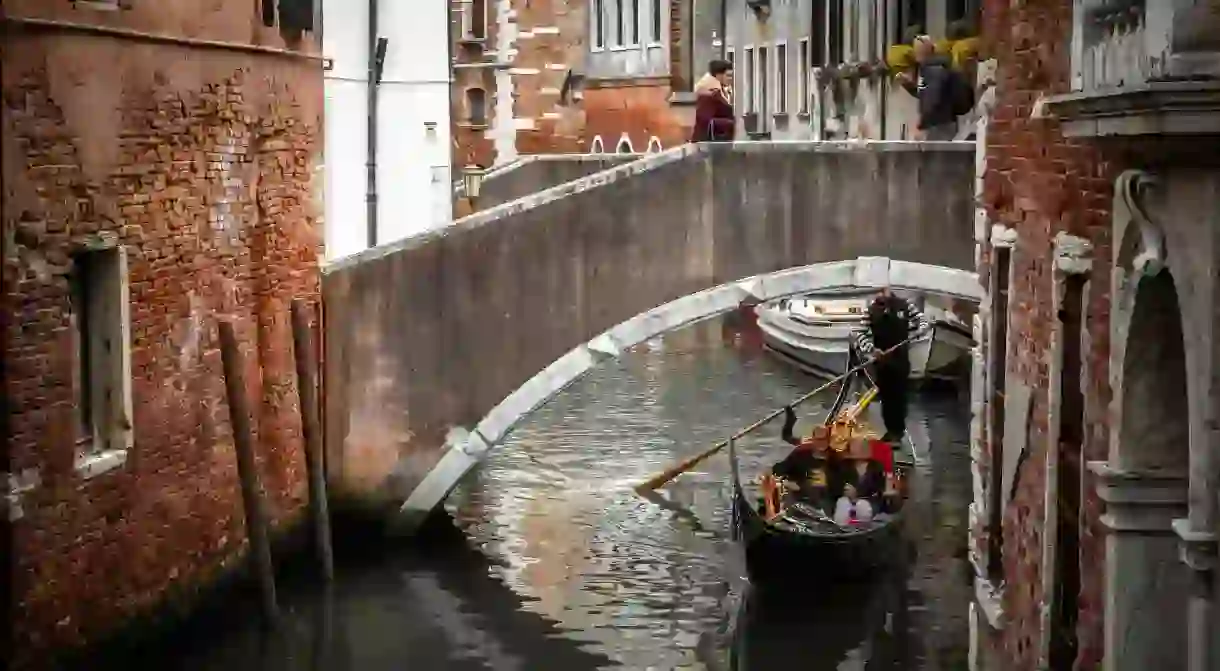A Guide to Murano, Venice's 'Glass Island'

Silvano is silver-haired and round, a stocky man with ruddy cheeks. The most striking thing about him are his arms and hands, which show an incredible strength – the kind of strength that comes from a lifetime spent in hard work. He is a glass master at Berengo Studios on the island of Murano, the historic home of the craft.
Glass Mastery
He’s making a large piece today, one that’s commissioned by an artist participating in the Venice Biennial. The molten blob of glass is perched on the end of a long, hollow metal tube, and it comes out of the furnace electric red. He handles the glass quickly and decisively, turning it to let gravity form the spherical shape, cutting it at precise intervals and blowing into the tube.
Murano is an island in the lagoon on the north side of Venice. The glass masters working there today are descendants of an unbroken line of artisans that reaches back to the beginning of the craft itself. In 1291, the Venetian government ordered glass masters to move their furnaces to Murano for fire safety reasons. Since then, they became a kind of second aristocracy there and the glass they made was traded far and wide. They refined the techniques for making all kinds of glass effects and Murano glass was the only quality glass for centuries.

Apprenticeships and learning
Glass makers passed on their craft mainly within the family and an apprenticeship to learn the kind of techniques Silvano does could last for many years, or even decades. That means working in the furnace is predicated on a fundamentally different idea of life and work and not so much suited to the kind of destabilized lives that younger generations live nowadays. However, a newly opened school on the island called Abate Zanetti hopes to modernize glass work by fitting it into the more modern format of the school. While more traditional views contend that the best school is working in the furnace itself, Abate Zanetti is a great resource if you’re interested in handling some glass yourself, offering short, week-long courses.
Like all mediums, glass making produces a wide-ranging variety of products, from high art to touristy kitsch, all of which is still going strong on this little island with a rich history.
Getting There
You might be approached by salespeople in Venice offering free boat rides to Murano and visits to their furnaces. If you take them up on the offer, be prepared for a lot of pressure to buy the items in their showroom. Visiting Murano by public vaporetto is much preferred.
You can take lines 4.1 or 4.2 from the stop Fondamente Nove on the north side of the lagoon, or catch line 3 from Piazzale Roma or Ferrovia. Get off at any stop once you reach the island. Colonna is easiest for visiting glass studios, but Museo is closest to the museum of glass. Plan to spend a day or at least an afternoon there, so you have plenty of time to stroll through the little shops.
Where to Visit
If you’d like to see glassblowing in action, I’d recommend visiting on weekday mornings, and keeping your eyes and ears open. Most of the serious studios are not open to the public, but you never know what you could encounter with an adventurous mindset and a respectful demeanor.
One furnace that is generally open to the public is called V.I.A. factory, located on Calle S. Cipriano, near the vaporetto stop Colonna. You’ll see a sign that says “Fornace – Entrata Libera,” and inside you can see a demonstration of some classic techniques of glassblowing. While the furnaces at Berengo are not open to the public, you shouldn’t miss a visit the the gallery out front, which displays some of the artwork that’s in production inside. The Ex Chiesa Santa Chiara is also a true gem on the island, a furnace located in a restored 12th century church. The showroom on the second floor houses all kinds of glass beauties and it is also an exhibition space for local artists.

Buying souvenirs
In terms of shopping, you’ll no doubt encounter a wealth of options, including everything from little knick-knacks to keep on your counter to huge vases that can be shipped to your country. Be warned that not every shop sells genuine articles. Use your own judgement when shopping and also look for the mark Vetro Artistico Murano, either on the item itself or on the door of the shop. You can also visit this site for a map of the shops of the island and if you’re wondering where to grab a bite to eat, check out our guide to the best restaurants on the island.
If you’re a serious collector of glass, you can schedule visits through the furnaces themselves, or through galleries that have contacts in Murano. Lovers of glass art and history will appreciate a visit to the Museo del Vetro, which has a large collection of historical glass art dating back to Egypt.
Did you know – Culture Trip now does bookable, small-group trips? Pick from authentic, immersive Epic Trips, compact and action-packed Mini Trips and sparkling, expansive Sailing Trips.













